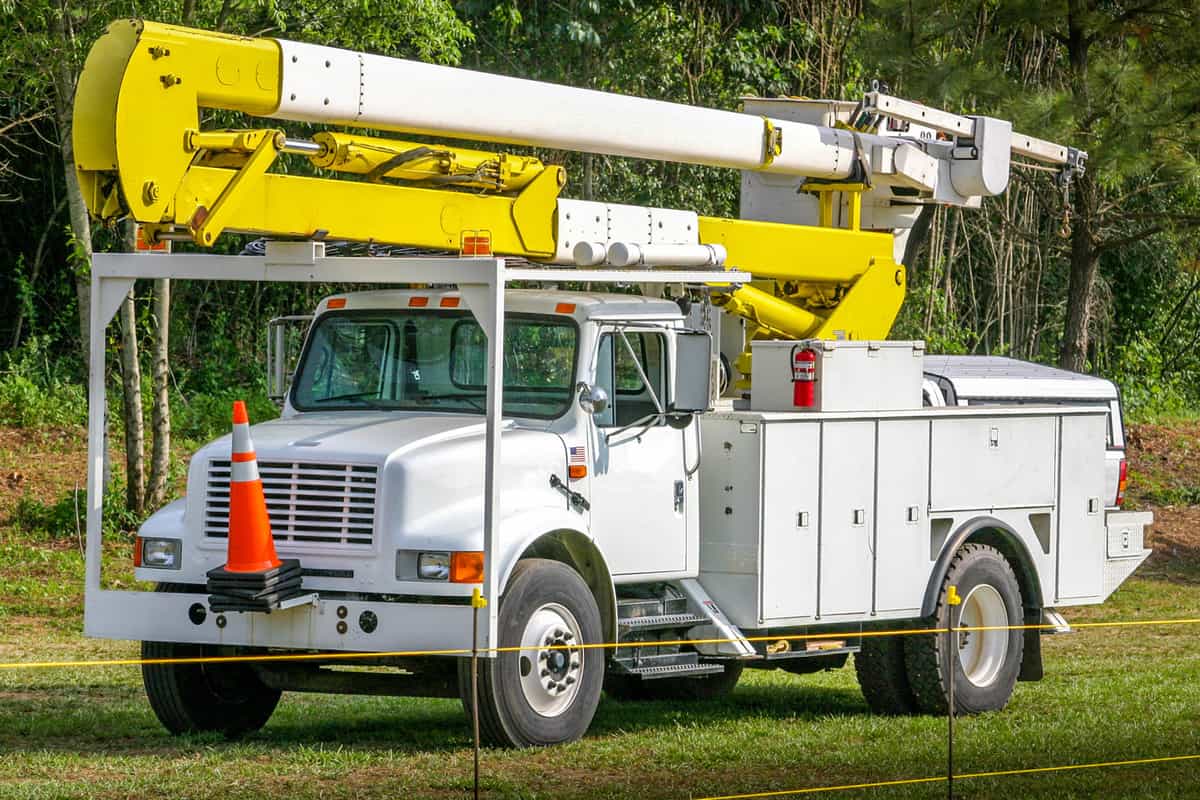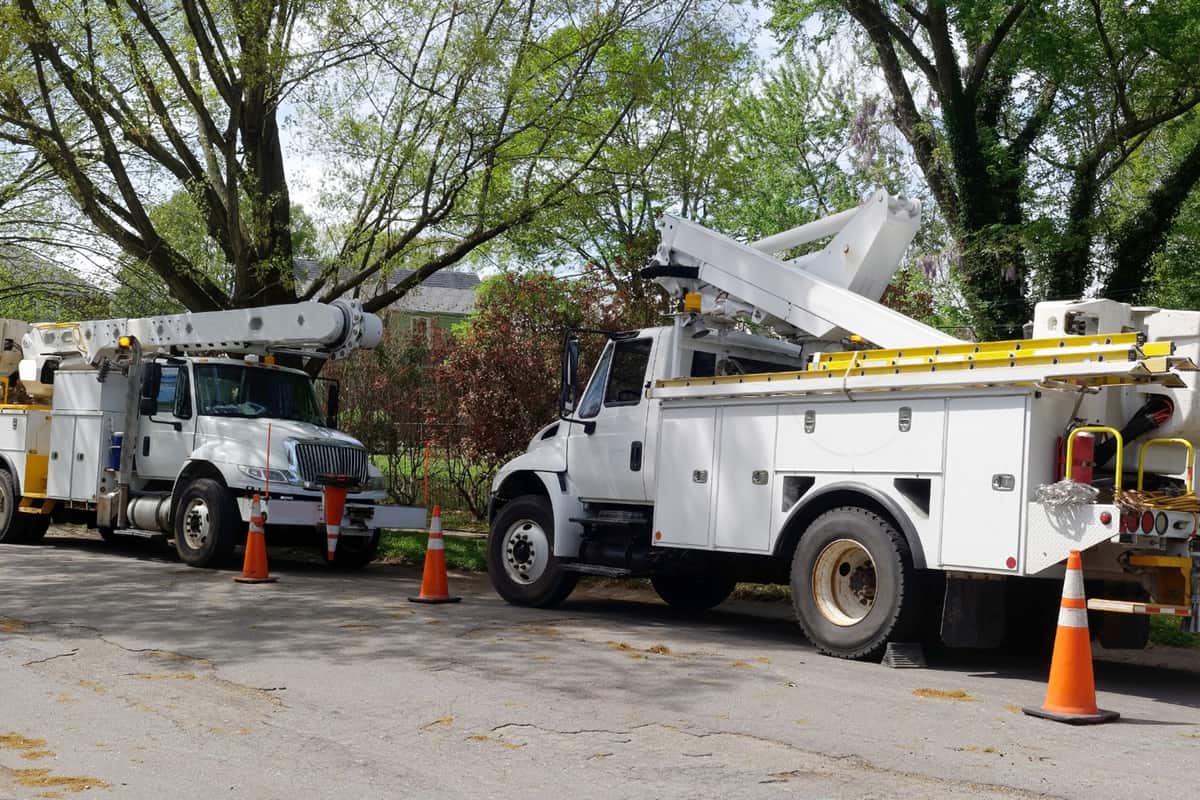A bucket truck is a special utility truck with an aerial working platform, or 'bucket'. Different industries use bucket trucks to bring people up to high places to reach their work. In this article, we focused on answering the question: "How much does a bucket truck weigh?"
Depending on the size and type, bucket trucks can weigh between 10,000 pounds (4,500 kg) and 84,000 pounds (38,000 kg). These figures are expressed as gross vehicle weight ratings (GVWR), or the maximum safe weight of the truck and all of its load.
Why there is such a large weight range for bucket trucks, and why is the weight important? Read on to learn more and figure out which one would be best for your company's needs.
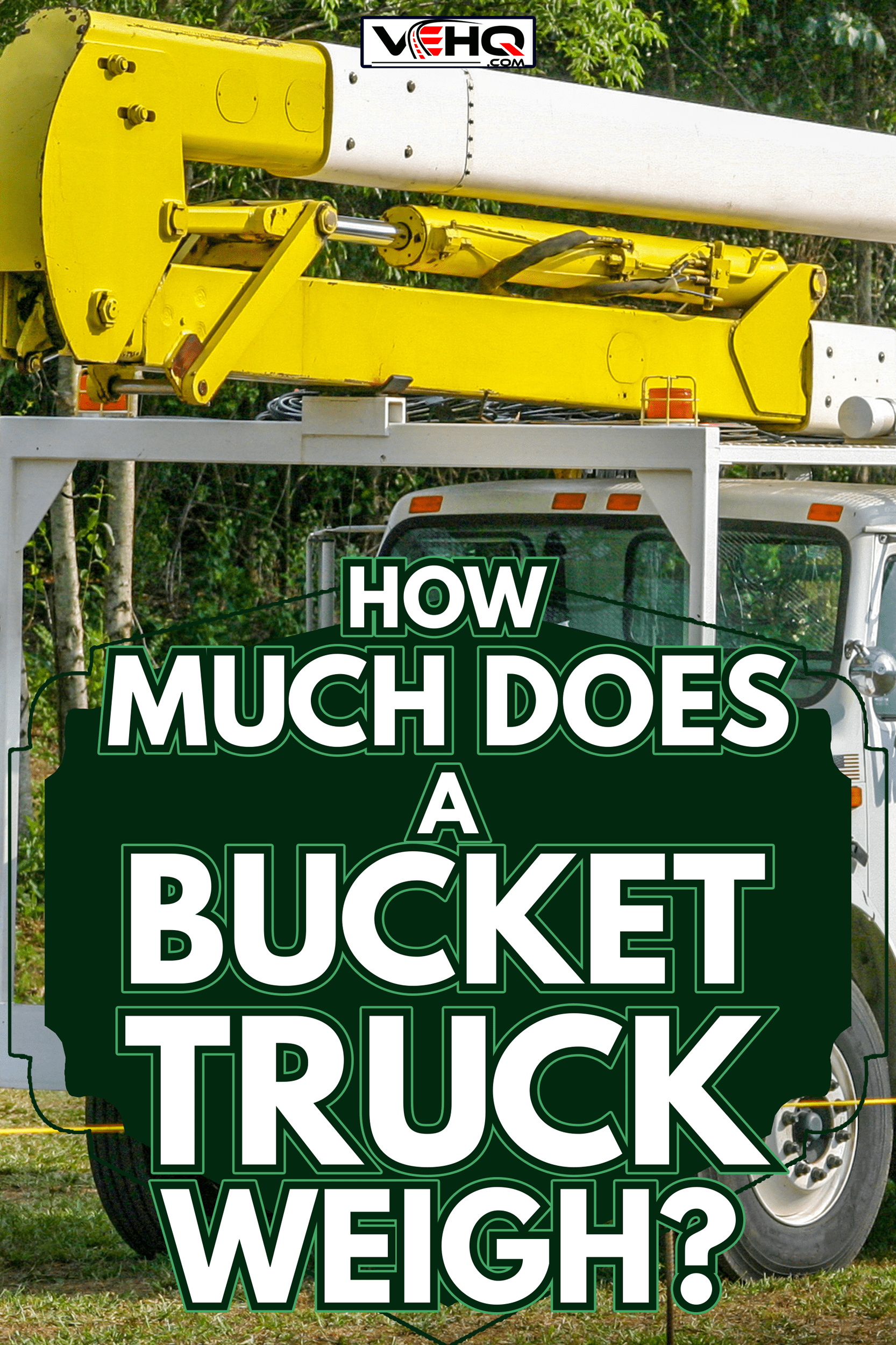
History of Bucket Trucks
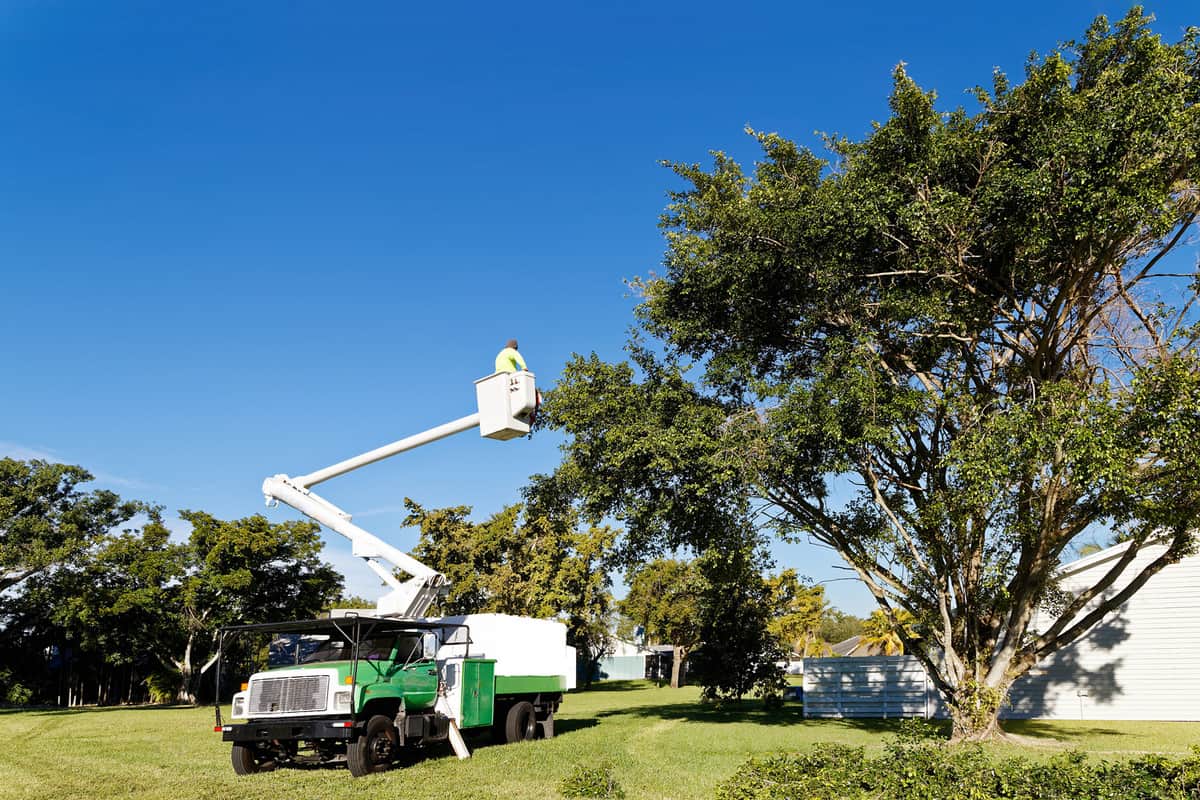
The first bucket truck design came out in the early 1900s. It was around the same period when internal combustion engines gained popularity.
The agriculture industry was the first to use the bucket truck, specifically in the fruit harvesting sector. Many orchard workers were filing compensation claims for accidents that happened while they harvested fruit from high trees using ladders.
Eventually, people started using a truck equipped with an aerial work platform (AWP) to make harvesting faster, easier and safer. This early design became known as the 'cherry picker', and this name still stands for some of today's bucket lifts.
Other industries found out about the advantages of the cherry picker, and eventually, they started adopting the same invention for their own use. Among these industries are:
- Electric utility
- Forestry
- Mining
- Construction
- Home improvements
Since then, bucket truck designs have evolved in terms of capacity, efficiency, and safety, but the basic functions remain the same.
Different Classifications of Bucket Trucks
Different bucket truck classifications stemmed from the different industries that adopted the concept and customized it for their particular needs.
Articulated Bucket Trucks
These belong to one of the earlier types of bucket trucks. The boom that raises the bucket comes as two pieces held together by a folding joint.
Telescopic Bucket Trucks
Another name for this type of truck is a 'squirt boom' or 'stick boom.' The boom comes as a single piece that can extend telescopically, and its primary advantage is the greater horizontal reach.
They are commonly used in the telecommunications industry and sometimes are in the form of a bucket van.
See an example of a telescopic bucket van below.
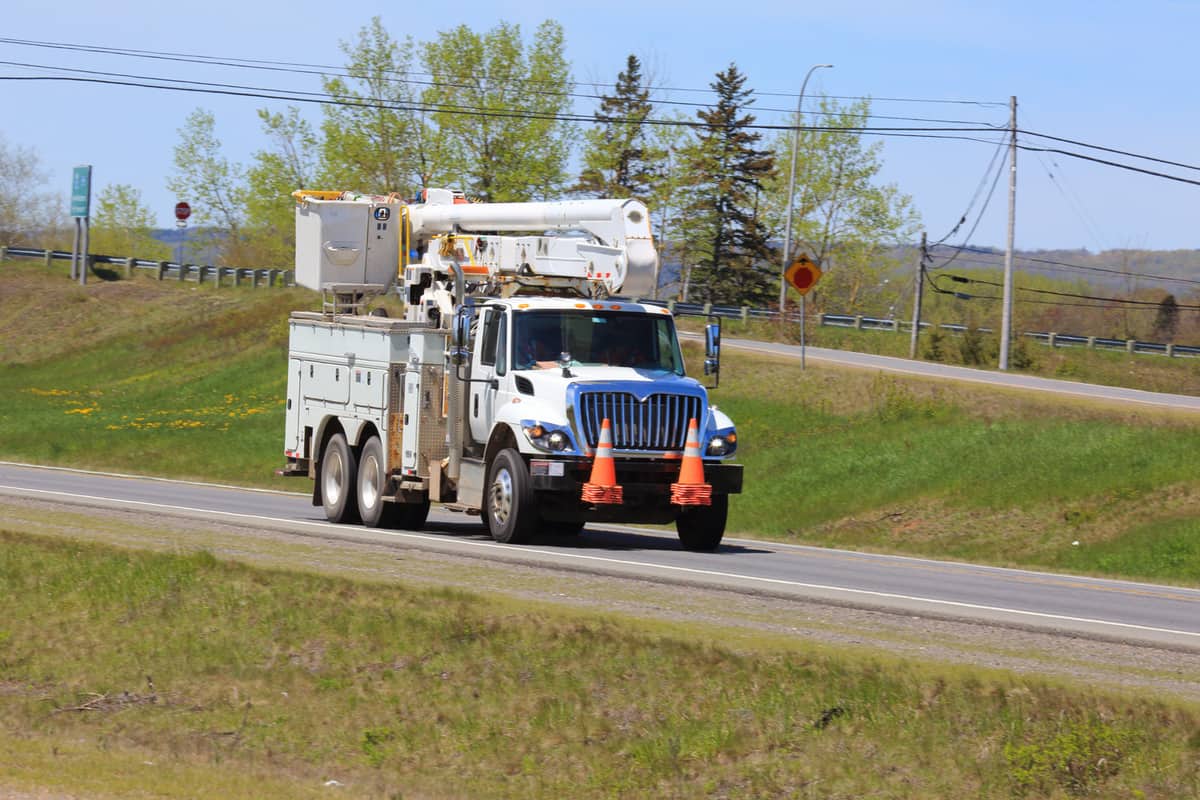
Articulating Telescopic Bucket Trucks
Also known as knuckle and squirt booms, these trucks have the combined benefits of a joint/knuckle that folds, and a telescopic boom that extends the reach. This combination allows for a greater side reach and also for lesser tail swing, increasing both effectiveness and safety.
Efficiency or productivity also increases because the truck does not need to move as much as it would with the first two types.
See below for an example of an articulating telescopic bucket truck.

Within the articulating classification, there are a few sub-categories, including:
Overcenter Bucket Trucks
These trucks allow the bucket or aerial platform to move beyond the center of the truck, thus adding more side reach. See below for an example of an overcenter bucket truck.
Below is an example of an overcenter bucket truck.
Non-overcenter Bucket Trucks
As the name implies, these trucks cannot move the bucket beyond the center of the truck and thus have limited side reach. Non-overcenter bucket trucks are more suitable for jobs that require working at a tall height or elevation.
See below for an example of a non-overcenter bucket truck.
Insulated Bucket Trucks
Utility companies often use these specialized bucket trucks for servicing overhead lines. The bucket and/or boom have non-conductive materials such as fiberglass in order to ensure personnel safety against electric shocks.
See below for an example of an insulated bucket truck.
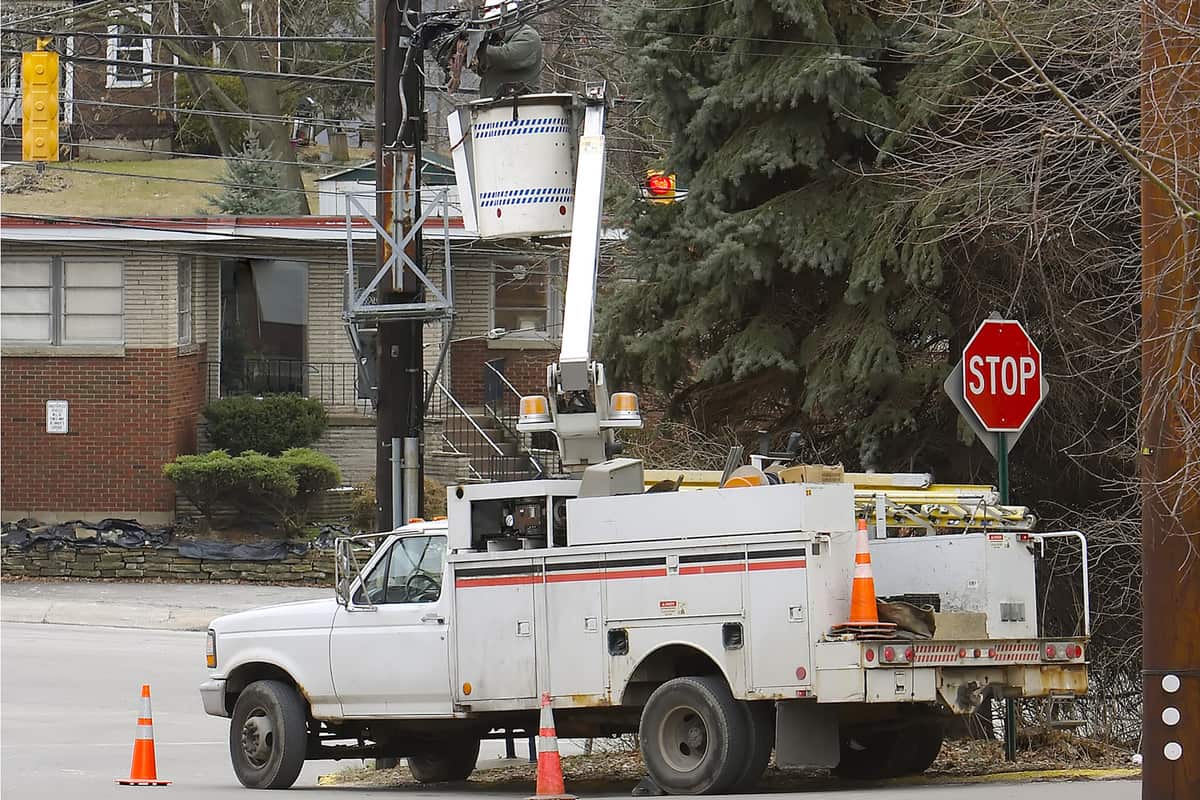
Non-insulated Bucket Trucks
This classification is straightforward, and it may cover articulated, telescopic, boom and squirt, and other classifications that have no insulating materials suitable for electrical line jobs.
Material Handler Bucket Trucks
Apart from carrying workers, these bucket trucks are designed to carry moderate amounts of materials up to high workplaces.
Track Bucket Trucks
As the name implies, these bucket trucks have tracks instead of tires. Tracks allow the bucket truck to navigate through rough terrain and get to job sites that would otherwise be unreachable for trucks with tires.
Below is an example of a track bucket truck.
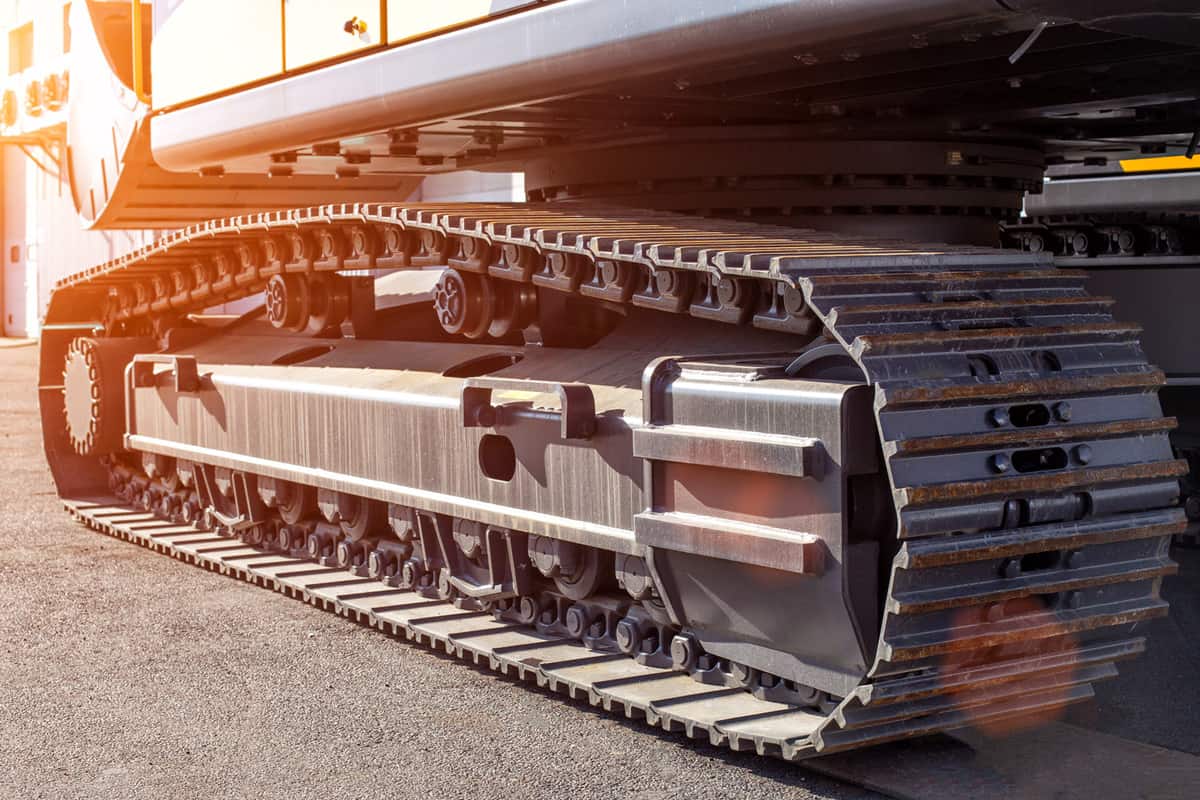
The Importance of Weight for Bucket Trucks
Bucket trucks are generally much heavier than regular vehicles with the same length, width, and height because of the mounted boom and bucket system. Although this additional weight may strain the trucks' fuel economy, it is very important for their basic function.
As a bucket truck extends its boom and positions its bucket, the entire vehicle's center of gravity shifts either upwards or sidewards.
With this extension, the truck's stability needs to hold out against the wind, bucket movement, and other external factors. The farther the reach, the heavier the bucket truck usually is.
Outrigger stabilizers and wheel chocks increase the bucket truck's stability, and we can see this in the image below.
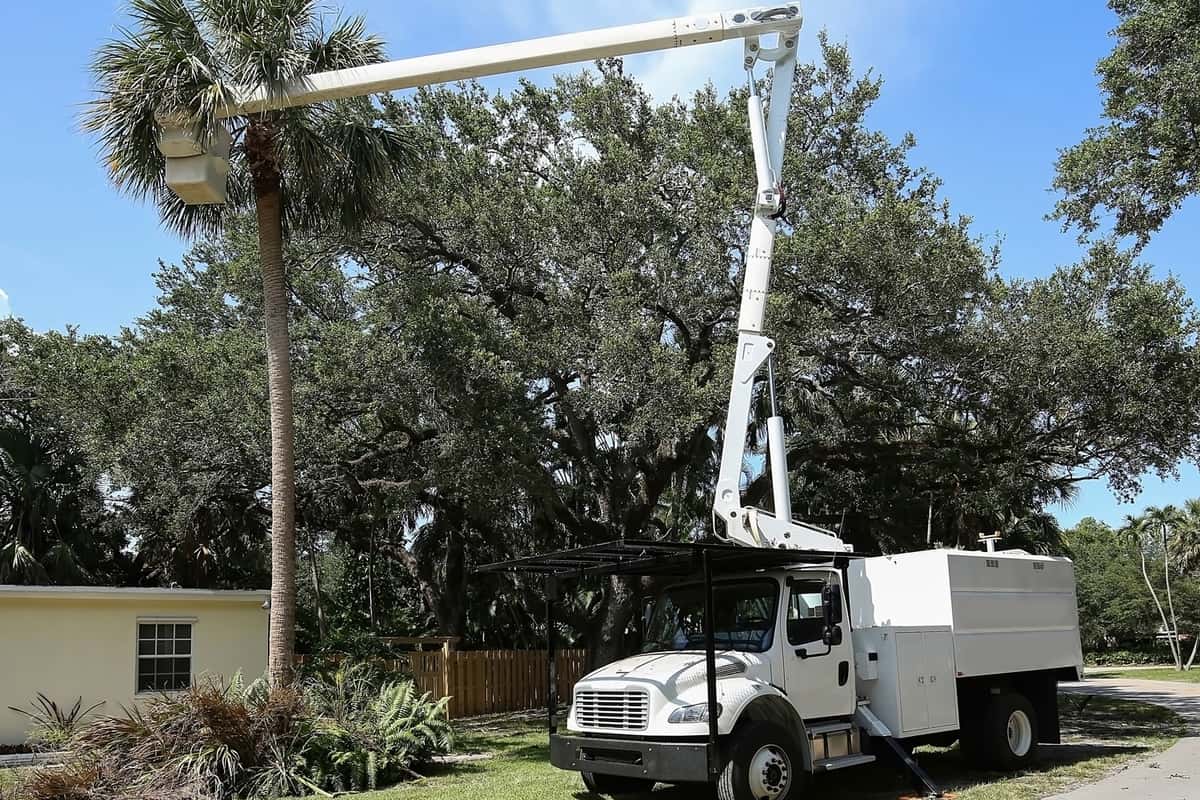
Bucket truck manufacturers always state the maximum bucket capacity and GVWR of their bucket trucks. To learn more about GVWR, check out this informative article.
Bucket Capacity
Bucket capacity refers to the maximum weight that the bucket can carry safely, and this weight varies greatly among different sizes of bucket trucks. In general, bucket capacity can range from 400 pounds (181 kilograms) to 2,000 pounds (907 kilograms).
Bucket capacity usually decreases as the boom extension or reach increases because of stability and safety considerations.
Platform Height/Reach
Different bucket trucks are designed for different vertical and horizontal reaches, and these specifications depend largely on the industry. Some of the common platform height categories are:
- 29 to 45 feet - These are common for telecommunications and electrical grid maintenance because neighborhood utility poles are usually 40 feet high. They are also useful for house repairs, window cleaning services, and rescue operations.
- 45 to 65 feet - These are medium to heavy-duty trucks that can be used in servicing some electricity distribution lines an for working on trees.
- 65 to 100 feet - These bucket trucks can access almost all utility poles and the majority of the trees in North America. They are also useful in fleet work.
- Over 100 feet - These high-reach trucks allow utility workers to reach areas that would otherwise require a helicopter. They are often used for servicing wind energy structures.
As of 2017, the world's highest-reaching, commercially available bucket truck is the Bronto Skylift Model SI 219 HDT-C. This truck has a platform height of 219 feet (67 meters) and a horizontal reach of 89 feet (27 meters).
However, the same company claims that its highest-reaching exhibition model can reach 367 feet.
Legal Requirements
Bucket truck operators need a commercial driver's license (CDL) to operate bucket trucks with a GVWR of 26,000 pounds or heavier. To know more, check out this great article about CDLs.
If the bucket truck has a maximum bucket capacity of 2,000 pounds, the operator needs to undergo crane operation certification as required by the U.S. Department of Labor.
Safe Operation of Bucket Trucks
Bucket trucks are not that easy to operate, and thus their operation most often requires special training, certification, and licenses. If operated improperly, bucket trucks can lead to serious damage to properties and lives because of the truck's size and the platform's exceptional reach.
Here are some safety practices for bucket trucks:
Driving
Bucket truck drivers must always keep in mind that their vehicles are extra heavy and that their platforms may extend beyond the original height and width of the vehicle.
Testing
Before any work starts, the operator must check if the boom, bucket, and all controls are functioning properly because the travel may have caused some damage.
Worksite Traffic Control
Operators need to make sure to set up traffic control devices to direct other vehicles away from the work area.
Truck Stability
The bucket truck operator should ensure the vehicle's stability using the outrigger stabilizers and wheel chocks as needed.
Positioning
Operators should position the bucket truck so that they can reach the most elevated work areas without having to move the truck.
Clearance
Operators must note the position of all obstructions within the bucket truck's range and operate the platform accordingly.
Buying vs. Renting Bucket Trucks
Bucket trucks are specialized equipment, and they are understandably quite expensive. Brand-new light-duty bucket trucks can cost between $40,000 to $150,000, while new heavy-duty ones can cost $450,000 or more.
If you own a company that needs bucket trucks regularly to deliver your service, then it may be a good idea to purchase one. However, if you only need to use a bucket truck once or for rare occasions, then consider renting one.
Bucket truck rental costs can vary with the season, location, and type of the vehicle itself. On average, bucket truck rental costs approximately $600 per day, $1,800 per week, or $5,200 per month.
The Wrap Up
The lightest bucket truck can weigh as much as three mid-size sedans, and the heaviest bucket truck can weigh the same as 400 men. Bucket trucks need to be heavy enough to remain stable, and operators need extra care to ensure safety during operations.

